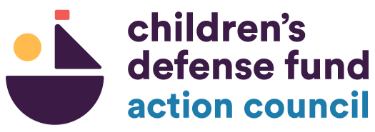CDFAC’s Legislative Report Card
The Children’s Defense Fund Action Council’s nonpartisan Legislative Report Card takes a comprehensive look at the legislative work each Member of Congress has done on behalf of our children.
We launched our current Legislative Report Card in 2020, our first publication in nearly a decade. Until 2011, the CDF Action Council produced scorecards based on votes alone, the way most legislative scorecards are still put together. We discontinued our scorecard after 2011 because there were fewer votes to score and what votes were taken for children often involved disparate pieces of legislation wrapped up in omnibus bills. We no longer felt we could put together a meaningful document with so few data points.
Beginning with the 116th Congress, however, we tried something different. We took time to learn how political scientists quantify legislative action and applied those lessons to create a new kind of legislative scorecard, our Legislative Report Card.
In our model, Members of Congress get credit for sponsoring, cosponsoring or voting for legislation that would help American children. Points are deducted for sponsoring, cosponsoring or voting for legislation that would harm American children. Points are converted to an A-F grade for each voting Member of Congress. This Legislative Report Card captures activity across a wide range of issues that affect child well-being. By the end of the 117th Congress, the Report Card included around 749 bills related to child poverty, health, education, early childhood care, immigration, gun violence prevention, housing, youth justice, and child welfare. The Report Card will be updated quarterly to reflect the ongoing work of this Congress.
A full list of the bills incorporated into the Report Card can be found here.
The bills included in this Report Card go beyond the legislation CDF has actively worked on during this Congress. We chose to include such a broad selection of bills because we believe that including as much information as possible makes for a better, more descriptive Report Card. We also understand that the work of supporting children is intersectional and happens across a broad range of legislative proposals. To make sure CDF’s policy agenda is front and center in our model, however, action taken in support of bills publicly endorsed by CDF counts for extra credit.
There are, of course, some limitations built into this new system. Some members may score differently than they might expect because a committee assignment requires they work primarily on issues outside the scope of CDF’s portfolio. Work on foreign affairs, for example, is not captured in our model because we have chosen to focus exclusively on domestic policy. Because the important work done by leadership in Congress is not necessarily captured by our model, Members of Congress in leadership roles tend to appear near the middle of our range of grades. For this reason, grades assigned to those in leadership may be less meaningful than those assigned to other members. We have therefore chosen not to include these grades in our Report Card, instead you will see those in leadership receiving a “L” letter grade to designate their leadership role.
There are some data limitations as well. A truly comprehensive measure of action taken on behalf of children would likely include things like floor statements, committee votes, votes on amendments, public leadership, and much more. An expansion of this Report Card to include those additional data may be possible in the future.
We believe that our new model allows us to measure the work Congress is doing for children in unprecedented detail.
